Country
Crash of a Douglas C-133B-DL Cargomaster near Palisade: 5 killed
Date & Time:
Feb 6, 1970 at 0215 LT
Registration:
59-0530
Survivors:
No
Schedule:
Travis - Harrisburg
MSN:
45581
YOM:
1959
Crew on board:
5
Crew fatalities:
Pax on board:
0
Pax fatalities:
Other fatalities:
Total fatalities:
5
Circumstances:
While flying over Nebraska by night at an altitude of 23,000 feet on a flight from Travis AFB to Harrisburg, PA, the aircraft suffered an explosion. It entered a dive and crashed in flames in a field located 5 miles northeast of Palisade. The aircraft disintegrated on impact and all five crew members were killed.
Crew:
Maj Harold W. Tabor, pilot,
1st Lt Duane D. Burdette, copilot,
S/Sgt Ira E. Bowers, loadmaster,
M/Sgt Joseph P. Tierney, flight engineer,
T/Sgt James J. Clouse, flight engineer.
Crew:
Maj Harold W. Tabor, pilot,
1st Lt Duane D. Burdette, copilot,
S/Sgt Ira E. Bowers, loadmaster,
M/Sgt Joseph P. Tierney, flight engineer,
T/Sgt James J. Clouse, flight engineer.
Probable cause:
It was determined that the explosion of the airplane was the consequence of the presence of a 11 inches crack located above the left side door that broke away in flight, causing an explosive decompression of the cabin. In such conditions, the crew was unable to maintain control of the airplane.
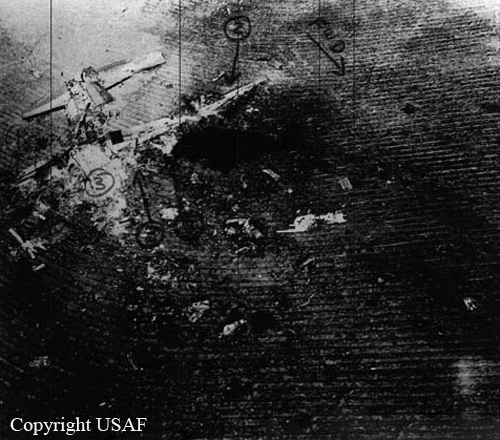
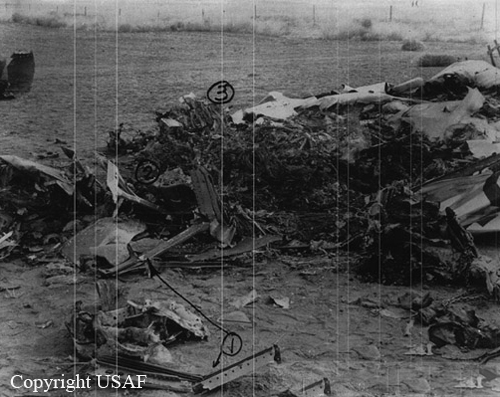
Crash of a Douglas C-133B-DL Cargomaster off Kadena AFB
Date & Time:
Apr 30, 1967
Registration:
59-0534
Survivors:
Yes
Schedule:
Kadena - Midway
MSN:
45585
YOM:
1959
Crew on board:
9
Crew fatalities:
Pax on board:
0
Pax fatalities:
Other fatalities:
Total fatalities:
0
Circumstances:
Few minutes after takeoff from Kadena AFB in Okinawa, while climbing to an altitude of 12,450 feet, the engine number four began to malfunction and was shut down by the crew who also feathered the propeller. The crew was cleared to return to Kadena for an emergency landing. On final approach, while at an altitude of 2,500 feet, the three remaining engines failed simultaneously. The captain decided to ditch the airplane into the sea, about 5 km offshore. The airplane broke in two and partially sank while all nine crew members were rescued.
Probable cause:
Failure of the propeller control and propeller power circuit on approach, causing the engine to flameout.
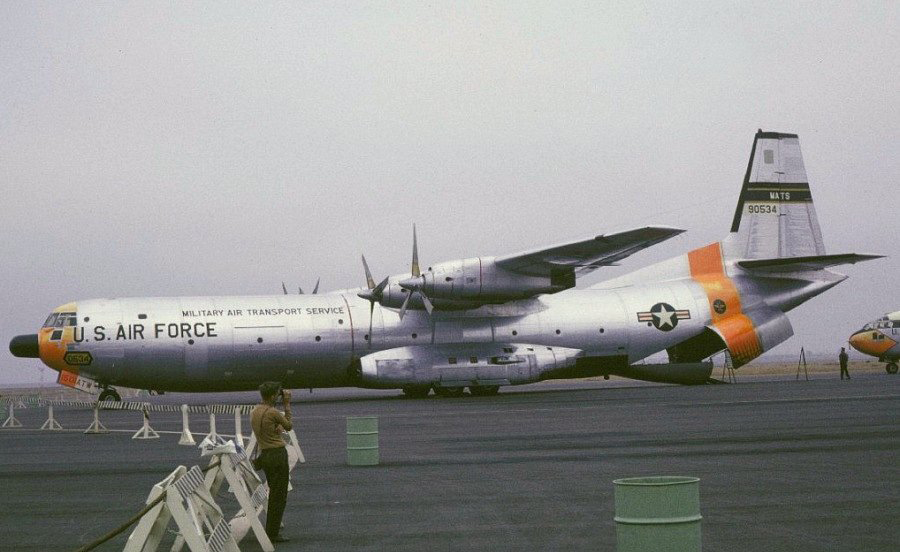

Crash of a Douglas C-133A-5-DL Cargomaster off Wake Island: 6 killed
Date & Time:
Jan 11, 1965
Registration:
54-0140
Survivors:
No
Schedule:
Wake Island - Kadena
MSN:
44710
YOM:
1954
Crew on board:
6
Crew fatalities:
Pax on board:
0
Pax fatalities:
Other fatalities:
Total fatalities:
6
Circumstances:
Shortly after a night takeoff from Wake Island, while climbing to a height of 500 feet, the airplane went out of control and crashed into the sea some 4,5 km off shore. All six crew members were killed.
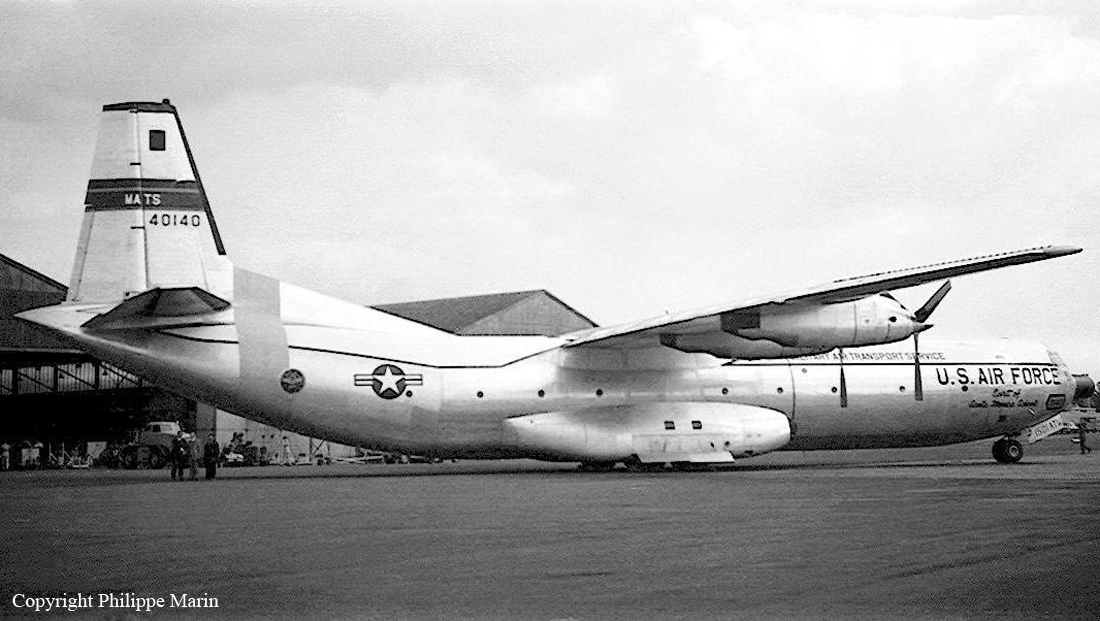
Crash of a Douglas C-133A-30-DL Cargomaster in Goose Bay: 7 killed
Date & Time:
Nov 7, 1964 at 1649 LT
Registration:
56-2014
Survivors:
No
Schedule:
Dover – Goose Bay – Sondreströmfjord - Thule
MSN:
45251
YOM:
1956
Crew on board:
7
Crew fatalities:
Pax on board:
0
Pax fatalities:
Other fatalities:
Total fatalities:
7
Circumstances:
The ill-fated aircraft that crashed was a Douglas C-133A Cargomaster s/n 56-2014 from Military Air Transport Service’s 1st Air Transport Squadron, based at Dover Air Force Base in Delaware. It arrived at Goose Bay 01:55 hours local time. After a 15-hour crew rest, they proceeded to depart enroute to Thule Air Base, Greenland with a stop enroute at Sondrestrom Air Base, also in Greenland. They were loaded with meat and other provisions. The first departure attempt was delayed due to a technical issue. The aircraft sat for a period of time without being de-iced before making a second try. At between 120 and 150 feet, the aircraft’s starboard (right) wing suddenly dropped 20 to 30 degrees. The aircraft commander managed to momentarily regain a level attitude. The aircraft then rolled to the left. The port wing dropped even more quickly and was almost vertical. The aircraft commander was unable to do anything. At 16:49 hrs local time, the Cargomaster struck the ground in a left wing down, nose high attitude.
Crew:
1st Lieutenant Guy L. Vassalotti, pilot,
Cpt Charles L. Jenkins, copilot,
Maj Frank X. Hearty, copilot,
1st Lt Douglas H. Brookfield, navigator,
T/Sgt John. A. Kitchens, flight engineer,
T/Sgt Norman H. Baron, flight engineer,
A1c Shelton Toler, loadmaster.
Crew:
1st Lieutenant Guy L. Vassalotti, pilot,
Cpt Charles L. Jenkins, copilot,
Maj Frank X. Hearty, copilot,
1st Lt Douglas H. Brookfield, navigator,
T/Sgt John. A. Kitchens, flight engineer,
T/Sgt Norman H. Baron, flight engineer,
A1c Shelton Toler, loadmaster.
Probable cause:
After an intensive investigation, the accident investigation board determined the primary cause was a power stall. The most probable reason was structural icing of the wing and /or vortex generators that had accumulated ice over the 15-hour layover.
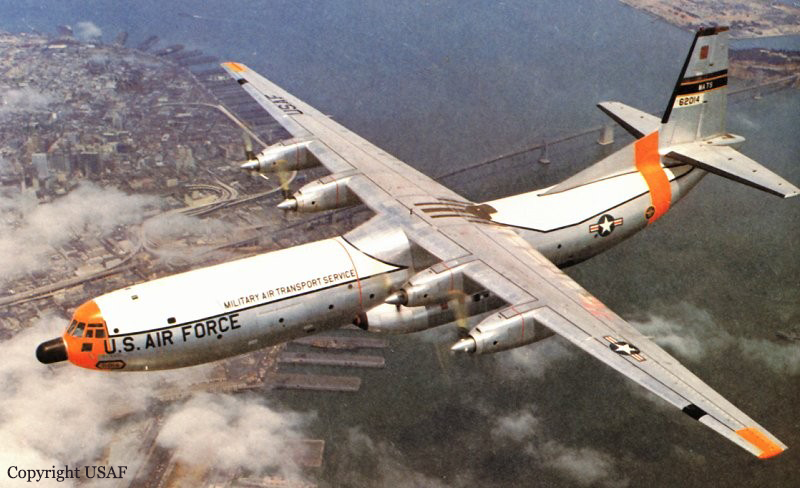
Crash of a Douglas C-133A-15-DL Cargomaster into the Atlantic Ocean: 10 killed
Date & Time:
Sep 22, 1963
Registration:
56-2002
Survivors:
No
Schedule:
Dover - Lajes
MSN:
45167
YOM:
1956
Crew on board:
10
Crew fatalities:
Pax on board:
0
Pax fatalities:
Other fatalities:
Total fatalities:
10
Circumstances:
About 57 minutes after his departure from Dover AFB, en route to Lajes, Azores Islands, the crew informed ground about his position flying at an altitude of 14,000 feet. In unknown circumstances, the airplane went out of control and crashed into the ocean about 1,440 km east of the coast of New Jersey. SAR operations were initiated but eventually suspended few days later as no trace of the aircraft nor the 10 crew members was found.
Probable cause:
Due to lack of evidences, the exact cause of the accident could not be determined with certainty.
Crash of a Douglas C-133B-DL Cargomaster at Travis AFB: 9 killed
Date & Time:
Apr 10, 1963 at 1612 LT
Registration:
59-0523
Survivors:
No
Schedule:
Travis - Travis
MSN:
45574
YOM:
1959
Crew on board:
9
Crew fatalities:
Pax on board:
0
Pax fatalities:
Other fatalities:
Total fatalities:
9
Circumstances:
The crew was completing a local training flight at Travis AFB. After few circuits, the pilot-in-command started a new approach to runway 21L in poor weather conditions when control was lost. The airplane crashed in a huge explosion 0,8 mile short of runway threshold and was destroyed. All nine crew members were killed.
Crash of a Douglas C-133A-35-DL Cargomaster into the Atlantic Ocean: 10 killed
Date & Time:
May 27, 1962 at 0925 LT
Registration:
57-1611
Survivors:
No
Schedule:
Dover - Lajes
MSN:
45508
YOM:
1957
Crew on board:
10
Crew fatalities:
Pax on board:
0
Pax fatalities:
Other fatalities:
Total fatalities:
10
Circumstances:
32 minutes after its departure from Dover AFB, while cruising east of Maryland coast at an altitude of 17,000 feet, the airplane disappeared from radar screens and crashed into the Atlantic Ocean. An empty life raft and a nose wheel were found floating on water some 53 miles east of Ocean City, Maryland, but no trace of the ten occupants was found. Amazingly, no other debris were found as the airplane was carrying 25 tons of various materials consisting of clothes, boxes and bags.
Probable cause:
Due to lack of evidences, it was not possible to determine the exact cause of the accident.
Crash of a Douglas C-133A-35-DL Cargomaster into the Pacific Ocean: 8 killed
Date & Time:
Jun 10, 1961
Registration:
57-1614
Survivors:
No
MSN:
45511
Crew on board:
8
Crew fatalities:
Pax on board:
0
Pax fatalities:
Other fatalities:
Total fatalities:
8
Circumstances:
Thirty-three minutes after its departure from Tachikawa AFB, the airplane crashed into the Pacific Ocean off the Japanese coasts. Few debris were found floating on water and all eight crew members were killed.
Probable cause:
The cause was determined to be structural damage resulting from a number three engine nose case failure with aircraft components striking number four engine and causing it to separate from the aircraft. Subsequent severe structural damage to wing and fuselage probably caused loss of aircraft control and electrical power.

